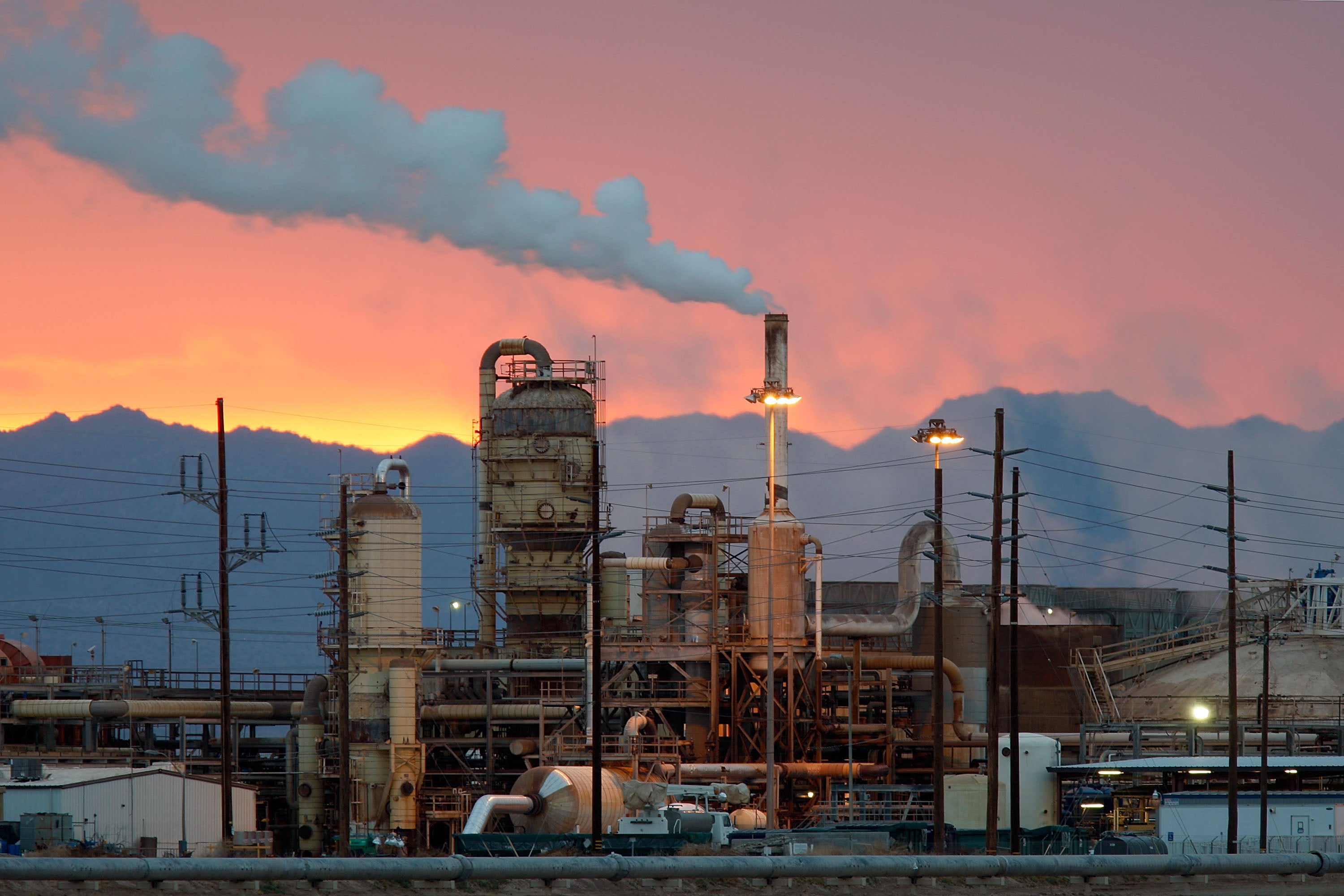
California and the Biden administration are pushing incentives to make the United States a global leader in a market that’s beginning to boom: the production of lithium, the lightweight metal needed for the batteries of electric vehicles and for the storage of renewable energy from power plants.
At the moment nearly all the lithium used in the United States must be imported from China and other nations. But that trend could shift within two years if an efficient method is found to remove lithium from power plant waste in California.
Since the 1970s, California has built power plants that make electricity from geothermal energy—steam from saltwater heated by magma from the molten core of the Earth. It now accounts for 6 percent of California’s power, but it is more expensive to produce than other forms of renewable energy, such as solar and wind power.
But that calculus could change if the wastewater from the process—a whitish, soup-like brine that contains a mixture of dissolved minerals and metals including lithium—can be separated so the lithium could be extracted.
According to a study by the Department of Energy, the Salton Sea in California’s Imperial Valley—one of two large geothermal energy production sites in the state—could produce as much as 600,000 tons of lithium annually.
That is more lithium than the United States currently uses. It could bring in $7.2 billion a year, and that could just be the beginning of expected economic benefits. The global demand for lithium is expected to grow as much as tenfold by 2030.
The expected growth will be driven by the United States, China, Europe and Japan as they push for more electric vehicles to reduce greenhouse gas emissions from transportation.
The expected income and the jobs that a strong U.S. lithium industry might produce have compelled some optimistic California leaders to give the potential boom a hopeful name: “Lithium Valley.” And there are other possible geothermal extraction sites in the state, as well as in Arizona and Nevada.
But there’s also a downside.
“Although separating out the lithium from the brine that is brought to the surface during the geothermal production cycle sounds simple, it is anything but,” explained Will Stringfellow, a scientist who is leading the lithium research at DOE’s Lawrence Berkeley National Laboratory.
He and other scientists recently explained in a report that there are also complex chemical, engineering and supply chain issues that need solutions.
Federal support
To help find a solution, the Biden administration has invested $30 million to fund next-generation technologies to improve the process.
They include a $4 million contest involving research teams from 15 universities trying to design a lithium separation process. Most of them plan to use a variety of membranes to extract the lithium from the wastewater.
“The effort to create a resilience of supply, a supply chain and to maximize economic development has struck the heart of this administration,” explained Alejandro Moreno in an interview. He is a deputy assistant secretary for renewable power at DOE.
By 2023 he expects the contest to produce three winning designs for technologies that can extract the lithium in ways that are cost effective and not environmentally harmful.
“We’re the first to try it,” he said, noting the effort to produce lithium from an already existing geothermal power plant process.
In some countries the lithium is mined, but the “dominant method” of obtaining it, according to the Berkeley study, is drawing up the hot, briny water to the surface and then pumping it into swimming pool-like storage ponds where solar energy eventually evaporates it.
The process can take as much as two years and even then only 50 percent of the lithium is removed.
One DOE report noted that a failure to develop a domestic source of lithium will pose national security risks. “Our supply chains for the transportation, utility and aviation sectors will be vulnerable and beholden to others for key technologies necessary for advancement,” it said.
The Defense Department will need advanced lithium-ion batteries for a variety of uses including electricity storage and aviation, it noted. And the U.S. commercial aviation industry will start in “about ten years” with “all-electric or hybrid-electric commuter aircraft,” said DOE’s report.
All-electric aircraft may use more powerful and perhaps lighter next-generation batteries for “large regional and single-aisle 737-class aircraft.”
Calif. incentives
Nature may have given California an ancient push to create a lithium market in the form of the San Andreas Fault, a dividing line between two tectonic plates that runs through the state for 750 miles.
The fault produces earthquakes, but it also provides access for the heated saltwater to rise closer to the Earth’s surface, where it formed ancient lake beds.
To help take advantage of this natural wonder, the California Energy Commission has provided multimillion-dollar grants to three companies that are planning their own advanced projects to create a domestic lithium market.
The state’s Legislature has formed a 14-member Commission on Lithium Extraction in California to work with EPA and DOE on other incentives that might be used to bring a lithium industry into being.
It is expected to submit a report by October 2022.
Reprinted from E&E News with permission from POLITICO, LLC. Copyright 2021. E&E News provides essential news for energy and environment professionals.
Stay connected with us on social media platform for instant update click here to join our Twitter, & Facebook
We are now on Telegram. Click here to join our channel (@TechiUpdate) and stay updated with the latest Technology headlines.
For all the latest For News Update Click Here

